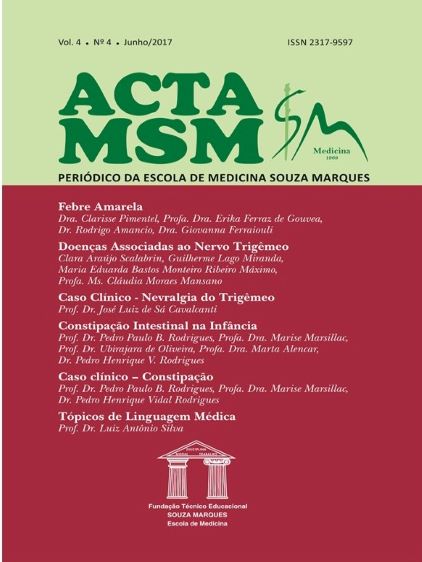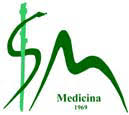Doenças Associadas ao Nervo Trigêmeo
Resumo
O Nervo Trigêmeo é um nervo misto denominado, como o V par craniano, e se subdivide em três ramos: Nervo Oftálmico (V1), Nervo Maxilar (V2) e Nervo Mandibular (V3). Os três ramos são responsáveis por grande parte da sensibilidade geral da região da cabeça e, a parte motora do nervo mandibular envia algumas fibras para alguns músculos, como os responsáveis pela mastigação. Por tal importância, este estudo tem como objetivo elucidar as principais doenças associadas a este nervo, sendo elas a Nevralgia do Trigêmeo, Hanseníase e Herpes Zóster (HZ), bem como seus respectivos tratamentos. As manifestações clínicas de um paciente acometido pela Nevralgia do Trigêmeo são: perda de sensibilidade, distúrbio auditivo, paralisia de um ou mais músculos da mastigação e perda de reflexos. A Hanseníase, ao acometer o nervo trigêmeo, leva principalmente à diminuição da sensibilidade da córnea e do nariz. No HZ, em casos de envolvimento do V par, existe uma evolução do quadro para a Nevralgia Pós-Herpética (NPH) pode causar alterações na face, na boca, nos olhos ou na língua. A abordagem para o tratamento da Nevralgia do Trigêmeo pode ser farmacológica, cirúrgica e/ou fisioterapêutica. O tratamento da Hanseníase, padronizado pela OMS, é baseado na poliquimioterapia, constituída por Rifampicina, Dapsona e Clofazimina. O tratamento do HZ é feito através do uso de fármacos antivirais, particularmente importantes em pacientes imunocomprometidos. Caso se desenvolva a NPH, o tratamento utilizará fármacos para o controle e alívio da dor, sem indicação para os antivirais.
Abstract
The Trigeminal Nerve is a mixed nerve called the V-cranial nerve, and is subdivided into three branches: Ophthalmic Nerve (V1), Maxillary Nerve (V2) and Mandibular Nerve (V3). The three branches account for a large part of the general sensitivity of the head region, and the motor part of the mandibular nerve sends some fibers to some muscles, such as those responsible for chewing. Therefore, this study aims to elucidate the main diseases associated with this nerve, such as Trigeminal Neuralgia, Leprosy and Herpes Zoster (HZ), as well as their respective treatments. The clinical manifestations of a patient affected by Trigeminal Neuralgia are the loss of sensation, auditory disturbance, paralysis of one or more chewing muscles and loss of reflexes. Leprosy, when affecting the trigeminal nerve, leads mainly to a decrease in sensitivity of the cornea and nose. In HZ, in cases of V pair involvement, there is an evolution of the condition to Post Herpetic Neuralgia (PHN) can cause changes in the face, mouth, eyes or tongue. The approach for the treatment of Trigeminal Neuralgia can be pharmacological, surgical and/or physiotherapeutic. Leprosy treatment, standardized by WHO, is based on multidrug therapy consisting of Rifampicin, Dapsone, and Clofazimine. Treatment of HZ is made through the use of antiviral drugs, particularly important in immunocompromised patients. If NPH is developed, the treatment will use drugs to control and relieve pain, without indication for antivirals.
Downloads
Publicado
Como Citar
Edição
Seção
Licença
Copyright (c) 2019 ACTA MSM - Periódico da EMSM

Este trabalho está licenciado sob uma licença Creative Commons Attribution-NonCommercial-NoDerivatives 4.0 International License.
Essa licença permite que outros façam download dos seus trabalhos e os compartilhem desde que atribuam crédito a você, mas sem que possam alterá-los de nenhuma forma ou utilizá-los para fins comerciais.




